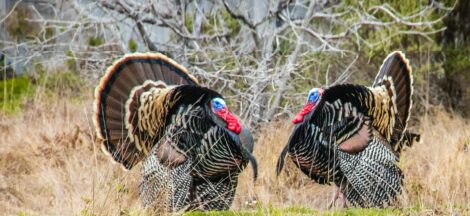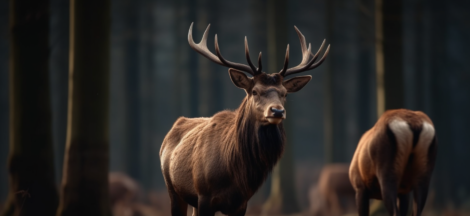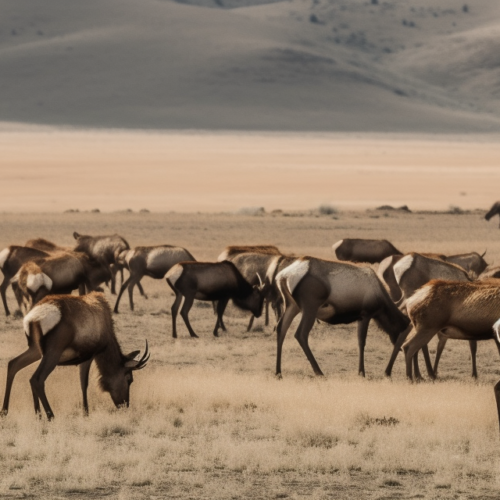Essential Gear for a Successful Elk Hunt
As a long-time hunter, I can attest to the importance of having the right gear for a successful elk hunt. But it’s not just about having the right equipment – it’s about knowing how to use it effectively and efficiently. In this guide, I’ll share some personal anecdotes and vivid descriptions to help you understand the essential gear you’ll need for a successful elk hunt. So, grab a seat by the campfire, and let’s dive in.
1. Essential Gear
2. Clothing and Footwear
3. Elk Calls
4. Scents and Attractants
5. Optics and Range Finders
6. Navigation Tools
7. First Aid and Survival Gear
8. Camping Equipment
9. Cooking and Food Storage
10. Packing and Organization
1. Essential Gear
There are a few pieces of gear that no elk hunter should be without. First and foremost is a reliable rifle or bow. You’ll want something that’s both accurate and powerful enough to take down an elk at a reasonable distance. I’ve used a variety of rifles and bows over the years, but my go-to is a .300 Winchester Magnum with a quality scope. It’s a potent combination that has never let me down.
Another must-have item is a good, sharp knife. A sturdy fixed-blade knife is perfect for field dressing and other tasks around the camp. I remember a hunt where my knife saved the day when my buddy’s blade snapped in half while field dressing an elk. Trust me, you don’t want to be caught in the field without a reliable knife.
Lastly, a solid pair of binoculars is invaluable for spotting elk from a distance. You’ll want something with good magnification and clarity, as well as a comfortable fit. I’ve been using the same pair of 10×42 binoculars for years, and they’ve served me well on countless hunts.
2. Clothing and Footwear
Elk hunting often involves long days of hiking and stalking through a variety of terrain and weather conditions. As such, you’ll need clothing and footwear that can keep you comfortable and protected.
I always recommend dressing in layers, starting with moisture-wicking base layers to help regulate body temperature. On top of that, add insulating layers like fleece or down to retain warmth, and finish with a waterproof, breathable shell to protect against wind and rain. I once spent a week hunting in the pouring rain, and my layered clothing system made all the difference in the world.
Footwear is equally important. A sturdy, waterproof pair of hunting boots with good ankle support and aggressive tread is essential for navigating rugged terrain. It’s also a good idea to invest in a quality pair of socks, like merino wool, to wick away moisture and prevent blisters. Trust me – nothing ruins a hunt faster than sore feet.
3. Elk Calls
Elk calls can be a game-changer when it comes to drawing in those elusive bulls. Over the years, I’ve had great success using a combination of diaphragm calls, bugle tubes, and cow calls. Each type of call has its own unique purpose and can be used to mimic the sounds that elk make in the wild.
Diaphragm calls are perfect for producing the high-pitched bugle of a bull elk, while bugle tubes help project the sound and add a realistic resonance. Cow calls, on the other hand, are used to imitate the soft, nasal sounds of a cow elk. I once called in a massive bull by mimicking a cow in distress, and let me tell you, it was an unforgettable experience.
Practice is key when it comes to using elk calls effectively, so be sure to spend some time honing your skills before heading out on your hunt.
4. Scents and Attractants
Using scents and attractants can be a powerful tool in your elk hunting arsenal. Elk have an incredibly keen sense of smell, and using the right scent at the right time can make all the difference in luring them into shooting range.
There are a variety of elk scents available, including cow urine, bull urine, and even elk estrus. I’ve found that a combination of these scents can be particularly effective during the rut, when bulls are actively searching for cows in heat. On one memorable hunt, I set up a scent wick soaked in cow elk estrus, and within 30 minutes, a beautiful 6×6 bull came charging in, ready for action.
Remember to pay attention to wind direction when using scents, and always handle them with gloves to prevent contaminating them with your own scent.
5. Optics and Range Finders
Quality optics can make or break your elk hunt. As I mentioned earlier, a good pair of binoculars is essential for spotting elk from a distance. But once you’ve located your target, a quality rifle scope is key to making a clean, ethical shot.
When it comes to scopes, you’ll want something with clear, bright glass and a reliable reticle. I’ve used several brands and models over the years, but I’ve found that scopes with a 3-9x or 4-12x magnification range work best for most elk hunting situations.
A quality range finder is another invaluable tool. Knowing the exact distance to your target is critical for making accurate shots, especially when shooting at longer ranges. I can’t tell you how many times my rangefinder has helped me make a successful shot on an elk that would have otherwise been out of reach.
6. Navigation Tools
Getting lost in the backcountry is a real possibility when you’re deep in elk country, and having reliable navigation tools is essential for both your safety and hunting success.
A handheld GPS unit is a great investment for any serious elk hunter. Not only can it help you keep track of your location and plot your route, but many models also allow you to mark waypoints, such as glassing locations, wallows, and potential campsites. I’ve found that having a GPS unit with detailed topographic maps can be invaluable for planning my hunting strategy and finding productive hunting areas.
In addition to a GPS, I always carry a compass and a map of the area as a backup. Batteries can die, and electronics can fail, but a compass and map will never let you down as long as you know how to use them. I remember a hunt where my GPS malfunctioned in the middle of a thick fog, and if it hadn’t been for my trusty compass and map, I might still be out there wandering the woods.
7. First Aid and Survival Gear
Accidents can happen in the field, and being prepared for emergencies is crucial. A well-stocked first aid kit should be part of every hunter’s gear list. At a minimum, your kit should include items like adhesive bandages, gauze, antiseptic wipes, medical tape, pain relievers, and any personal medications you may need.
In addition to a first aid kit, it’s essential to carry basic survival gear, such as a fire starter, a space blanket, a whistle, a signal mirror, and some form of emergency shelter. I once found myself unexpectedly stranded overnight when a sudden snowstorm rolled in, and my space blanket and fire starter were absolute lifesavers.
8. Camping Equipment
When hunting elk, you’ll often find yourself camping in remote areas far from the comforts of civilization. As such, having the right camping gear is essential for a comfortable and successful hunt.
A sturdy, weather-resistant tent is a must, along with a warm, lightweight sleeping bag and a quality sleeping pad. I’ve spent many a night shivering in a cheap sleeping bag, and believe me, it’s not an experience I’d like to repeat.
Other essential camping gear includes a reliable camp stove, a water filtration system, and a collapsible camp chair for those moments when you just need to sit back and relax by the fire.
9. Cooking and Food Storage
Proper nutrition and meal planning are crucial for maintaining energy levels during a strenuous elk hunt. Before heading out, plan your meals carefully and pack lightweight, calorie-dense foods like freeze-dried meals, energy bars, trail mix, and jerky.
For cooking, I recommend a lightweight backpacking stove and a compact cookset that includes a pot, pan, and utensils. And don’t forget a durable, insulated food storage container to keep your perishables fresh and protected from wildlife.
Staying hydrated is equally important. Always carry a water bottle or hydration system, and consider bringing a lightweight water filter or purification tablets to ensure you have access to safe drinking water in the field.
10. Packing and Organization
With all this gear, it’s essential to stay organized and pack efficiently. A quality hunting pack with plenty of pockets and compartments is a must. Look for a pack with a built-in meat shelf, as this will make hauling out your hard-earned elk much easier.
When packing your gear, try to distribute the weight evenly and keep frequently used items, like your rangefinder, calls, and snacks, easily accessible. And don’t forget to pack a few extra batteries, zip ties, and a roll of duct tape – you never know when they might come in handy.
By following these tips and ensuring you have the essential gear for a successful elk hunt, you’ll be well on your way to making memories and filling your freezer with delicious, wild-harvested elk meat. Good luck out there, and happy hunting!





 5 Expert Tips for Calling in Bull Elk
5 Expert Tips for Calling in Bull Elk